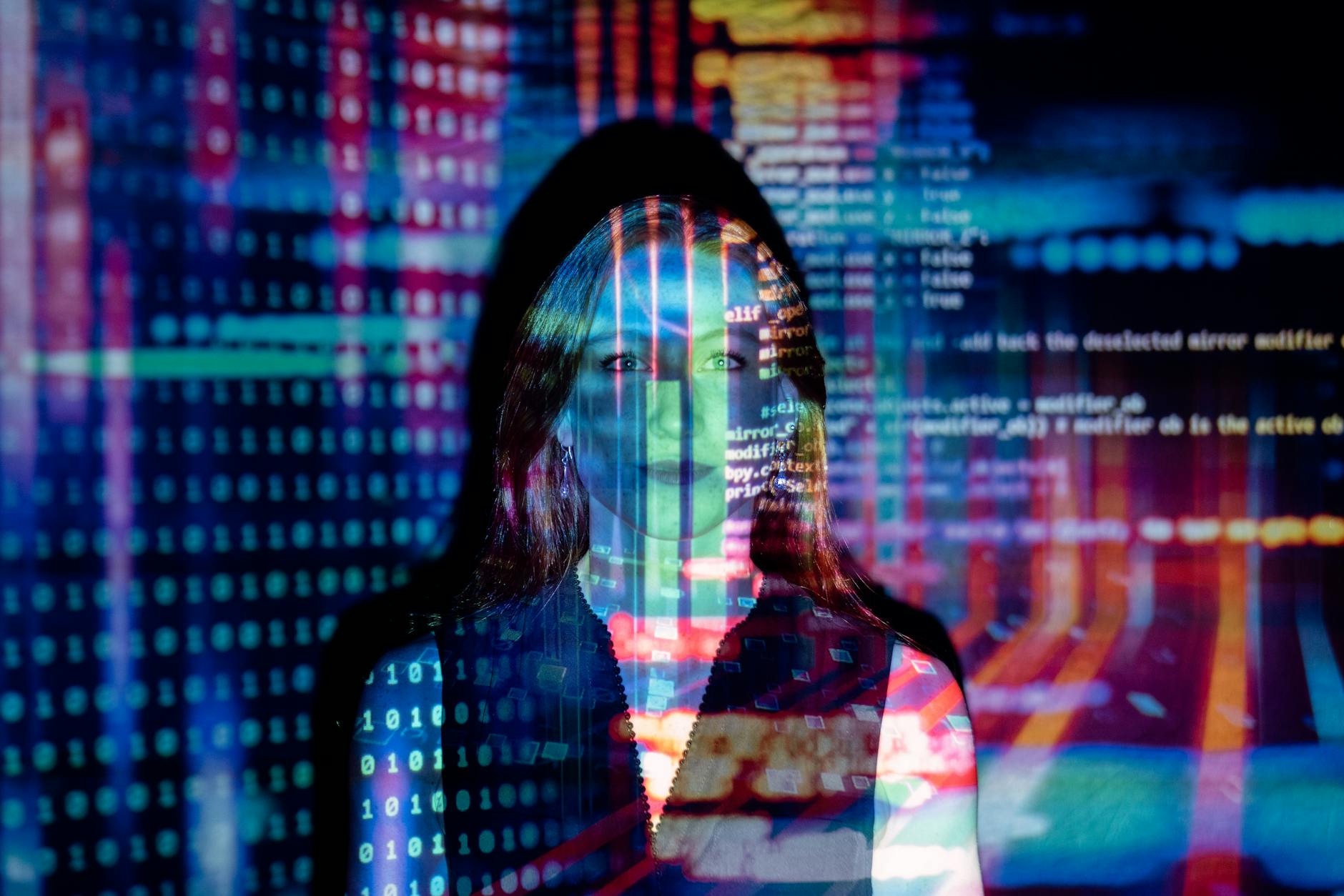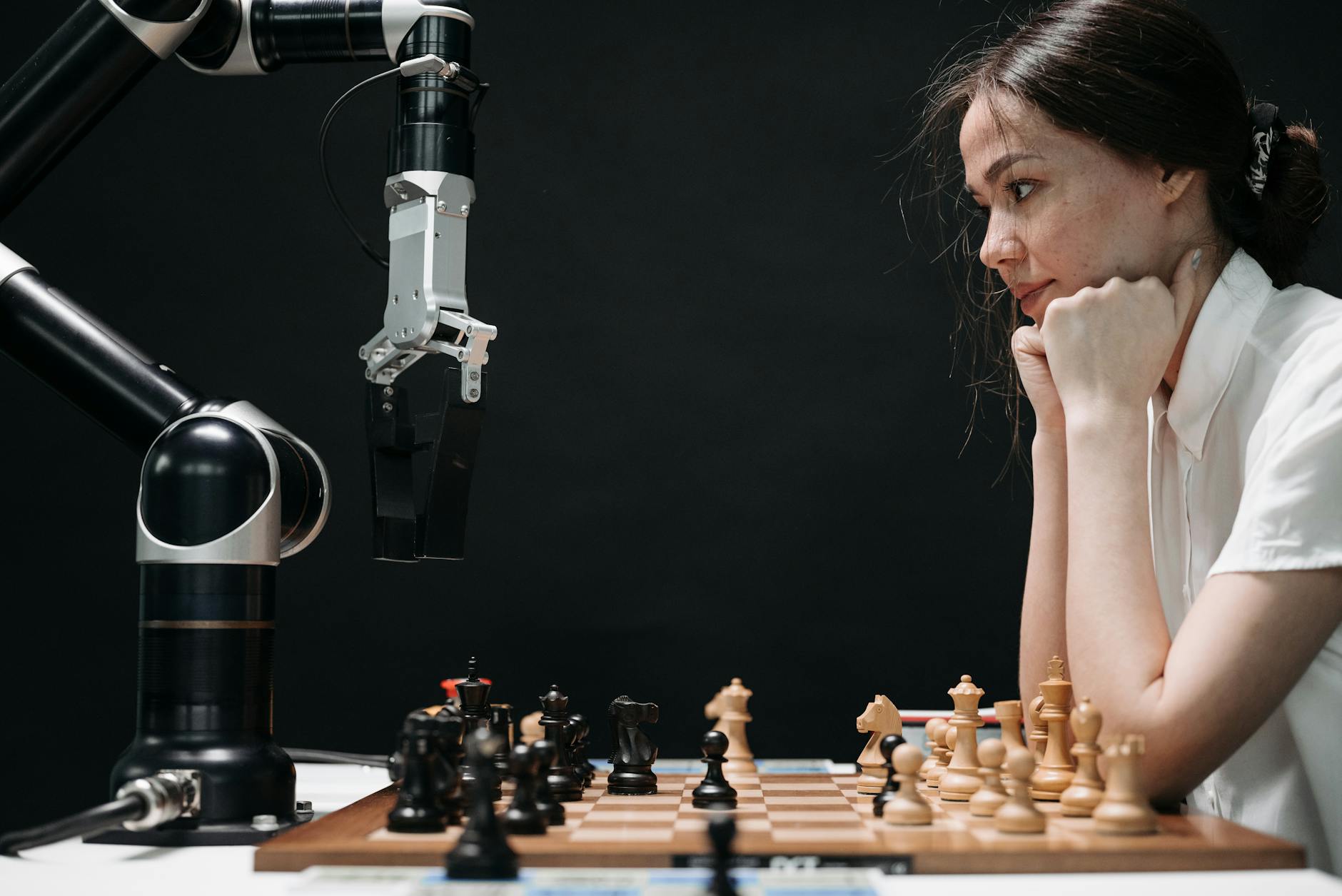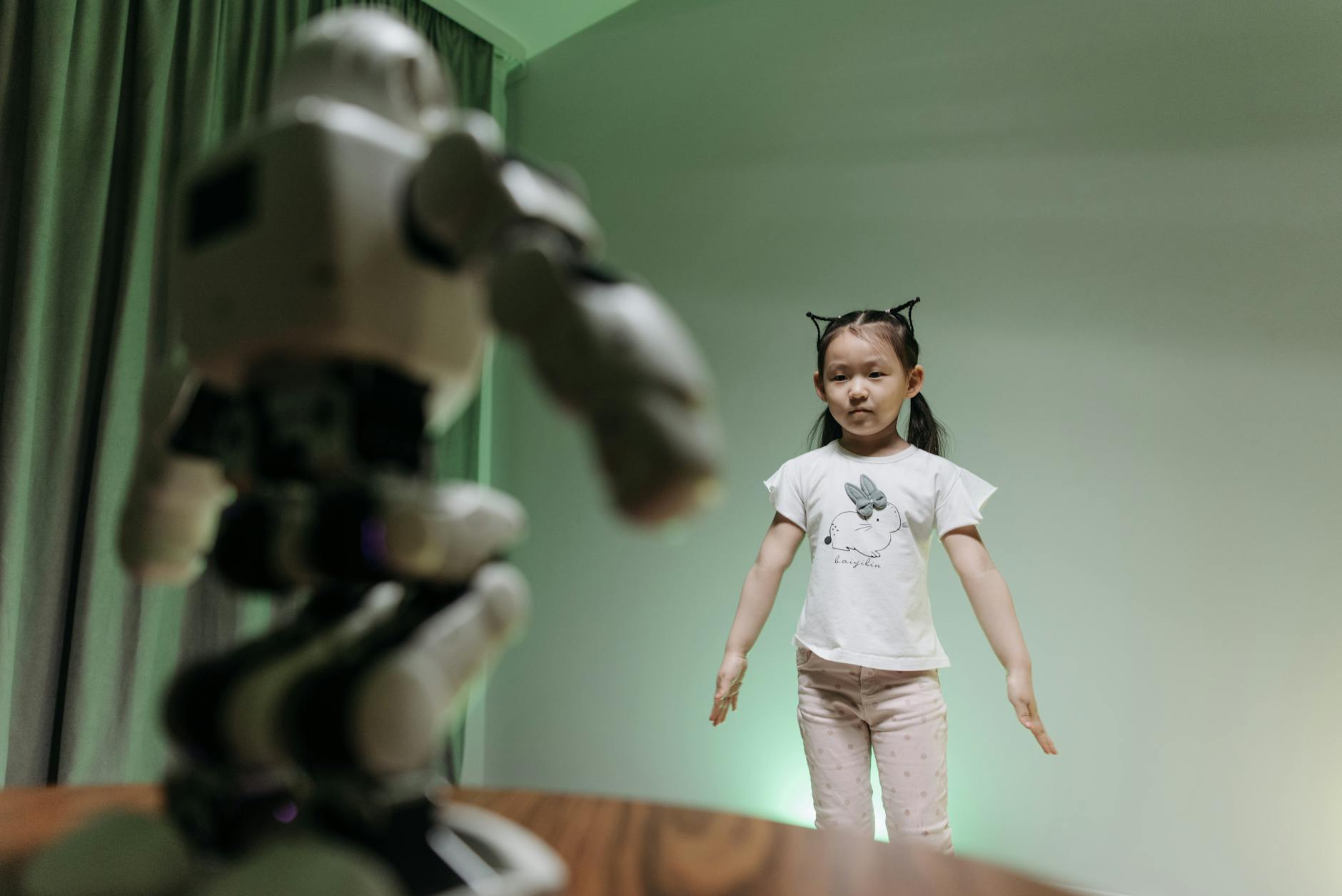Empower Your AI Understanding: Decoding Supervised vs Unsupervised Learning
Understanding Learning Approaches
Alright, folks! Let’s get straight into it. In the universe of artificial intelligence, knowing the difference between two superstar learning strategies—supervised and unsupervised learning—sets the stage for understanding how things tick. Buckle up as we explore these main routes and their importance.
Supervised Learning Overview
Now, supervised learning is like teaching a dog new tricks—only with data. We give this clever AI a bunch of labeled examples so it can learn to classify or predict what’s coming next. Imagine tossing a ball for Fido and labeling it ‘fetch’—same idea here; the algorithm learns from input-output pairs (IBM).
Say we’re on a mission to guess what your future home will cost. We’d toss in facts from past sales, like how big the place was, where it was, and the sale price. The model then catches onto patterns between these and makes educated guesses for new homes based on its training.
| Application | Description |
|---|---|
| Predicting commute times | Keeps tabs on past gridlocks and weather mess-ups |
| Classifying emails | Pulls apart spam from legit messages using past examples |
While supervised models usually hit the nail on the head, they demand lots of labeled info upfront. Snooze alert: for more geeky insights, see our bit on machine learning vs deep learning.
Unsupervised Learning Overview
Flip the coin, and you’ve got unsupervised learning—where algorithms dive into data blindly. Here, there’s no helping hand of labels, so these smart algorithms play detective, uncovering hidden patterns all on their own (IBM).
This method shines in tasks like clustering (think gathering tribe members with similar traits) and finding rule patterns. For instance, an algorithm might cluster your customers based on their shopping styles, unearthing unique buying groups. Of course, it doesn’t hurt to double-check the computer’s hunches with a human eye.
| Application | Description |
|---|---|
| Customer segmentation | Divides shoppers by what they buy so businesses know who to pitch to |
| Anomaly detection | Sniffs out oddballs that could mean fraud or mix-ups |
Unsupervised models are the go-to for spotting veiled structures, especially when you’re diving in blindfolded. Peek at our ai model comparison for a bigger picture.
Getting to grips with supervised and unsupervised learning lets us handpick the right tool for our data projects, helping us unlock AI’s mighty superpowers in the best way.
Purpose and Methodology
Application in Real Life
When it comes to AI, we usually chat about two big players: supervised and unsupervised learning. Yeah, those guys are game-changers in lots of fields and make tech super useful.
Supervised Learning Applications
Supervised learning is the go-to when you’ve got labeled data all neat and organized. Here’s where it shines:
- Image Classification: Ever wonder how your phone knows the difference between your cat and your car? Yep, that’s supervised learning.
- Speech Recognition: Turn those voice memos into texts without lifting a finger.
- Medical Diagnosis: Spotting illnesses from medical scans quicker than a doc can say “X-ray.”
- Fraud Detection: Catching those sneaky transactions that just don’t sit right.
These models predict like a pro because they’ve learned from previous examples. Curious about how it stacks up against deep learning? Dive into our machine learning vs deep learning article.
Unsupervised Learning Applications
And now for unsupervised learning, which rolls without any labels to latch onto. It’s all about figuring out hidden gems in data:
- Clustering: Grouping similar folks together like sorting party guests into chat circles.
- Dimensionality Reduction: Making sense of big data by trimming it down for a clearer picture—think of it as a digital diet.
- Association: Finding those sneaky relationships in data dumps (handy for predicting your next online splurge).
E-commerce sites love to use clustering, forming customer crowds based on buying vibes—no labels needed (Roboflow Blog). For more on AI debates, pop over to our ai model comparison.
| Type of Learning | What’s it good for? |
|---|---|
| Supervised | Image calling, Speech gizmo, Stopping fraudsters |
| Unsupervised | Grouping buyers, Visualizing data, Shopping habits |
Distinction in Data Usage
Supervised and unsupervised learning kinda do their own thing with data. Their unique styles have big impacts on their usefulness and applications.
Supervised Learning Data Usage
With supervised learning, data waltzes in with labels in tow. Models feast on input-output pairs, learning to predict outcomes. Let’s say you’re spotting fraud—each transaction is tagged “all good” or “uh-oh.” This helps the model pick up on what’s fishy (Towards Data Science).
Here’s how it rolls:
- Data Gathering: Scoop up as many labeled samples as you can.
- Model Practicing: Teach it the ropes between inputs and outputs.
- Quality Check: Test its skills with new, unseen data.
Unsupervised Learning Data Usage
Now, unsupervised learning is a lone ranger, no labels in sight. It sifts through data to find the cool patterns or connections hidden within.
Picture clustering algorithms acting like matchmakers, pairing customers based on what they buy, with no guide to help.
This is all about exploring:
- Data Digging: Getting the juicy details from raw info.
- Pattern Spotting: Noticing trends you might miss.
| Feature | Supervised Learning | Unsupervised Learning |
|---|---|---|
| Data | Tagged | No tags |
| Aim | Foreseeing results | Finding cool trends |
| Typical Role | Identifying images | Crowd mapping shoppers |
| Model Practice | Knows the pairs | Finds its own matches |
These unique approaches show how each type of learning comes in clutch for different AI tasks. Want to know more? Check out our ai vs human intelligence article for a deep dive into AI’s tricky questions.
Supervised Learning Deep Dive
In supervised learning, we’re basically using labeled data as our guide, teaching models to make spot-on predictions for fresh data. Let’s unravel the nuts and bolts of this methodology and the different models we can use.
Labeled Data Training
In supervised learning, you get this nice little setup where each input’s got a matching output already labeled. This output is our cheat sheet or “ground truth,” helping our algorithm figure out what’s what between inputs and outcomes (Towards Data Science).
Picture training a model to pick out spam emails. We’d hand it a bunch of emails, each tagged as “spam” or “not spam.” The algorithm then learns what spam looks like by comparing these labels with the emails themselves.
| Task Type | Example Application |
|---|---|
| Classification | Spam Detection, Image Recognition |
| Regression | Price Prediction, Weather Forecasting |
Training with labeled data is super important. It lets our model learn from what’s come before, which boosts its smarts for tackling new stuff. The trade-off? It takes quite a bit of elbow grease from humans to label everything correctly.
Types of Supervised Learning Models
You’ve got two main camps here: classification and regression.
Classification Models
When your answer falls into distinct categories, classification models get the job done. Here’s the who’s who of classification models:
- Logistic Regression: Despite the name, it’s often used for tasks where you classify into two groups (e.g., spam vs. not spam).
- Support Vector Machines (SVM): Think of them finding the best line that divides different classes.
- Decision Trees: These branch out decisions to classify inputs into categories.
Regression Models
When you need to predict a number, regression models are your go-to. They’re like your GPS for numerical predictions. Some popular ones are:
- Linear Regression: It draws a straight line through the data to predict outcomes.
- Polynomial Regression: Takes it up a notch by drawing curved lines to catch the funky, non-linear patterns.
- Ridge and Lasso Regression: Fancy versions of line drawing that keep overfitting at bay.
| Model Type | Example Algorithms |
|---|---|
| Classification | Logistic Regression, SVM, Decision Trees |
| Regression | Linear Regression, Polynomial Regression, Ridge and Lasso Regression |
Take a gander at our AI model comparisons for more on their strengths and where they shine.
Supervised learning pops up all over the place: weather forecasts, price changes, sniffing out sentiment, and sorting emails. Curious about how AI stacks up to human intelligence or checks out other AI tricks, peek at our pieces on ai vs human intelligence and neural network vs genetic algorithm.
By cracking the code of labeled data and knowing our model types, we can see why supervised learning is basically the backbone of modern AI’s accuracy and efficiency.
Unsupervised Learning Deep Dive
Alright folks, let’s huddle up and chat about unsupervised learning and the nifty things we can do with it. Imagine wandering through a data jungle without a map, just your wits and instincts. That’s unsupervised learning for you. Unlike its well-guided sibling, supervised learning, this method lets us discover hidden gems in unmarked data territories.
Raw Data Analysis
So, what’s the magic with unsupervised learning? It tackles data that hasn’t been labeled by anyone. That means the model doesn’t get any hints upfront. It’s like going into the wild west and having to figure out who’s who and what’s what without a guide. Handy, right? Especially when putting labels on data gives you a headache or it’s next to impossible.
The toolset here works solo, pinpointing similar or odd patterns in the heap. For example, we can group customers by what they buy or spot fishy behavior online without needing prepped labels first. It’s our ace for snooping around data to spotlight unseen patterns and nifty trends.
Common Unsupervised Learning Algorithms
There are a bunch of famous algorithms ready to help with tasks like grouping items, slimming down data, or finding relationship hunches. Here’s a sneak peek:
| Algorithm | Job | What it Does |
|---|---|---|
| K-means Clustering | Grouping | Sorts data into ‘k’ groups through feature matching. |
| Principal Component Analysis (PCA) | Slimming Features | Trims down variables while keeping key info. |
| Apriori | Rule Discovery | Sniffs out variable connections, a hit in shopping cart analysis. |
- K-means Clustering: This trusty algorithm corrals data points into groups based on their traits. Picture it sorting customers into neat categories by what stuff they swipe their cards for (Roboflow Blog).
- Principal Component Analysis (PCA): Ask PCA to prune datasets by snipping out excess variables. It’s like giving data a much-needed haircut while keeping its shape intact, especially when data looks like a tangled mess of endless numbers (Roboflow Blog).
- Apriori Algorithm: When you need to dig up connections in hefty datasets, call April… oops, Apriori. Retailers dig it for figuring out which items make buddy-buddy pairs on the shelves (Roboflow Blog).
These algorithms give us the intel to make smart moves, from crafting marketing strategies to keeping the digital world safe from threats. They’re our go-to gadgets for making sense of data piles, turning chaos into opportunity.
Check out more about how these gems stack up against supervised learning pals, like your everyday neural networks and genetic algorithms, and see what makes each tick in the land of AI.
Comparison and Applications
Differences in Learning Focus
When it comes to supervised vs unsupervised learning, they each focus on different goals, like two uniquely talented siblings. Supervised learning is like the older child who knows exactly what needs doing. It learns to connect the dots between input and output through labeled data sets. Think of it as getting a cheat sheet for a test—by reviewing examples with answers, this method becomes aces at predicting results when given similar input.
Unsupervised learning, however, is more like the adventurous sibling who explores without a map. It digs into raw, messy data without the help of labels, hunting for hidden treasures like patterns and connections lurking beneath the surface. Instead of directly predicting stuff, it’s more about discovering the secrets of your data’s personality.
| Aspect | Supervised Learning | Unsupervised Learning |
|---|---|---|
| Data | Labeled | Unlabeled |
| Focus | Prediction and classification | Exploring patterns |
| Accuracy | High with accurate labels | Varies with data |
| Human Help | Necessary for labeling | Minimal, mainly for checks |
Practical Use Cases
Looking at real-world use, it’s clear that supervised and unsupervised learning fit like puzzle pieces, solving distinct problems and sometimes boosting each other’s performance in the process.
Supervised Learning Use Cases:
- Predicting Commute Times: Picture a model that knows your drive like your favorite route app. It can guess how long you’ll be in traffic by learning from past data involving time, weather, and road conditions.
- Email Spam Detection: Train it with a pile of old emails marked as junk or not, and it becomes your inbox bouncer, sorting your messages with ease.
Unsupervised Learning Use Cases:
- Customer Segmentation: Think of it as a digital detective, grouping people based on shopping behavior or styles—stuff companies love for laser-focused ads (source).
- Feature Reduction: This is like a tech-savvy minimalist, using tools like PCA to declutter data, making it tidy and insightful without losing the good stuff (source).
| Application | Method | Example |
|---|---|---|
| Commute Time Prediction | Supervised Learning | Guessing traffic times from known factors |
| Email Spam Detection | Supervised Learning | Sorting emails by spam rules |
| Customer Segmentation | Unsupervised Learning | Batching customers for better marketing |
| Feature Reduction | Unsupervised Learning | Cutting down data bulk for better analysis |
For more nuggets of wisdom on AI, check out our article about ai model comparison or dive into the debate of machine learning vs deep learning. Curious about how AI stacks up in the brains department? Get the scoop on ai vs human intelligence.
Semi-Supervised Learning
Bridging the Gap
We’re all familiar with AI’s big talkers: supervised learning and unsupervised learning. But what about their nifty cousin, semi-supervised learning? This method works like a friendly mix between the two.
Semi-supervised learning grabs the best bits of both approaches, using a lovely blend of tagged (labeled) and untagged (unlabeled) data to train models. It’s a lifesaver when you can’t get your hands on a ton of labeled data but have an ocean of the unlabeled kind. Imagine you’re in medical research, where you’ve got some labeled images that show diseases, along with a heap of plain ol’ images waiting for discovery.
| Data Type | Description | Example Usage |
|---|---|---|
| Labeled Data | Data with neat tags or results stuck to it | Medical pics with disease labels |
| Unlabeled Data | Data flying solo without tags | Piles of regular patient scans |
The magic of semi-supervised learning is how it learns from both camps, using the best parts of supervised and unsupervised learning together.
Benefits and Applications
Semi-supervised learning isn’t just cool; it’s packed with perks that fit snugly into real-world stuff:
1. Improved Accuracy with Limited Labeled Data:
A pinch of labeled data can do wonders for model performance. This is good news for fields like medical imaging where tagging data eats up time and needs experts to get it right.
2. Cost-Efficiency:
Tagging data often means shelling out cash and time. But throw in a bunch of unlabeled data, and we cut down on costs and time, still hitting high accuracy.
3. Better Feature Extraction:
Semi-supervised models can find and study intricate features in the data, which might be tough to pick up using just labeled or unlabeled data alone.
Semi-supervised learning works wonders in spots like these:
- Healthcare:
- Spotting diseases with a small batch of labeled patient info, mixed with a lot of general scans.
- Online Content Moderation:
- Grouping content with a limited tagged set of nasty posts plus loads of general social media chatter.
- Customer Segmentation:
- In e-commerce, using a few labeled customer profiles alongside loads of browsing data to crank up recommendation systems.
For a closer peek at other AI models, take a look at our AI model comparison.
By standing in the sweet spot between supervised and unsupervised learning, semi-supervised learning lets us tap into the power of AI in fresh, smart ways. Whether it’s figuring out medical fates or boosting online shopping, semi-supervised learning has a balanced approach to getting things done right.













